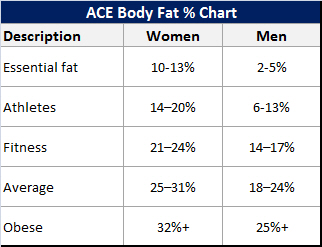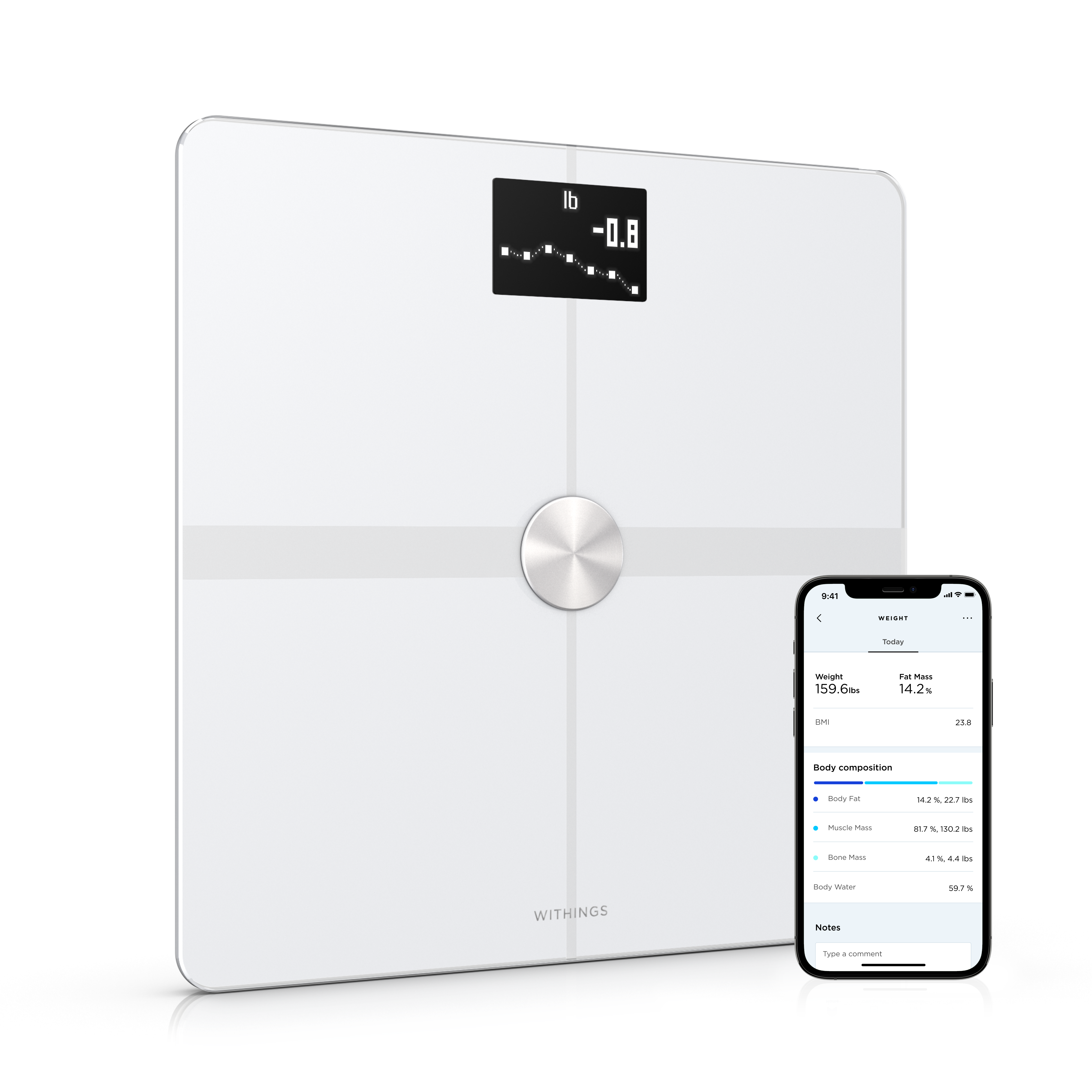
The ideal fat-lean ratio varies depending on several key points. Find out what they are, and how Withings smart scales featuring body composition, can help you reach your goals.
First of all, you should know that it isn’t the same for men and for women. It also depends of your age. To help you assess if your body composition is good or bad, here are the commonly accepted levels that define the minimum, maximum and average body fat percentages of a healthy person. But first, let’s see how it works…
How do the Body + and Body Cardio scales measure fat mass?
To calculate the percentages of lean and fat mass, the scale uses a very low and harmless electrical current to measure the opposition your body presents to the its passage. As electricity doesn’t behave the same when it goes through fat, muscle, bone or fluids, our engineers were able to build an algorithm that extrapolates your body’s opposition to the current and provides you with a fat-lean ratio.
Why track your fat and lean masses?
Even though measuring the lean-to-fat ratio is tricky (your body composition constantly changes), and comparing ratios over time is only relevant if the weigh-ins are made in the same conditions, it is still a good indicator of how healthy your weight is. It basically tells you if you have an unhealthy level of fat. A normal body composition includes fat, but beyond a certain percentage, you start to be exposed to weight-related diseases (diabetes, coronary problems…). A low level of fat mass is also critical.
This is why your fat mass is a valuable information. If you track it through time you will also see how your efforts are paying off, and if your physical activity and diet really have an impact on your condition.
Healthy levels of fat mass for a fit person
1. Minimum
5% for men
12% for women
2. Maximum
25% for men
32% for women
3. Average
15 to 18% for men
22 to 25% for women
What does a healthy fat mass level look like?

As we said, calculating the lean-fat ratio isn’t the easiest body metric to measure. This is why we recommend that you weigh yourself regularly, at the same time, in the same conditions (food intake, exercise, 30 minutes after getting out of bed…). We also advise you to look at the general trend of the ratio, instead of worrying about this or that value.
The American Council on Exercise (ACE) has put out the chart below, linking each fat mass percentage to a certain condition (source). Note that the “Average” condition in this table is actually overweight.
Three special cases
1. Are you an athlete?
Athletes usually have a low fat-lean ratio because their muscle mass is bigger than for a non-athletic person (be aware that this rule also depends on what sport the athlete practices). This is why it is relevant to switch Body Composition Model if you are an athlete.
2. Expecting a baby?
Pregnant women can use the Withings smart scales with absolutely no health risk. However, if you own one of our body composition smart scales (Body+ or Body Cardio) the fat mass measurement will not be accurate. As the baby grows, the future mother’s body composition changes drastically and the preset models will not be relevant anymore. However if expecting, we recommend you activate the Pregnancy Tracker program in the Health Mate app. This will automatically turn off body composition readings, help you understand how much you need to gain, and deliver obstetrician-reviewed advice for every stage of your pregnancy.
3. Do you have a pacemaker?
Persons with an implanted pacemaker should not use our scales that feature body composition such as the Body + or Body Cardio. If you have this, try our Body scale, which features no body composition, but also tracks weight, BMI, and even gives a daily weather report.



